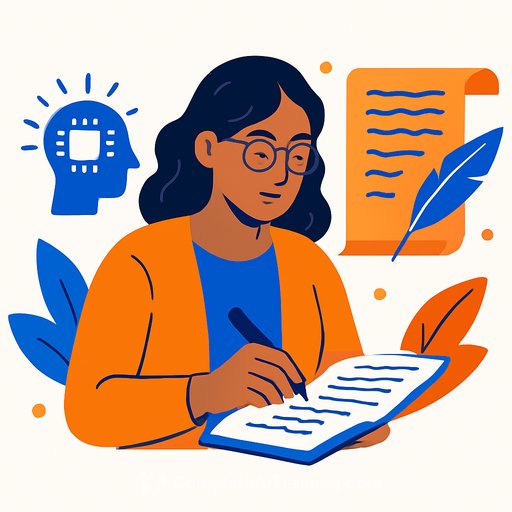Boris Johnson says he writes books with ChatGPT. Here's what that means for working writers
Boris Johnson openly said he uses ChatGPT to write books, calling it "frankly fantastic" and admitting he asks it questions while drafting. He joked that it flatters him, and said AI will help society "because we're all simple."
He also argued AI could cut the cost of government and save taxpayers money. Johnson, who resigned as an MP in 2023 over allegations he misled parliament about Covid-19 rule-breaking, didn't rule out a political return. The Conservatives, now led by Kemi Badenoch, are struggling in the polls after last year's landslide defeat.
Why this matters to writers
If a former prime minister is comfortable saying he writes with AI, the stigma is fading. Readers and clients will care less about how words are produced and more about how useful, accurate, and original they feel. Your edge is how fast you ship and how unique your perspective is.
Practical ways to use ChatGPT without losing your voice
- Outline first, then prompt: Draft your thesis and structure; ask ChatGPT to stress-test arguments, fill gaps, and suggest counterpoints.
- Idea expansion: Feed it your bullet notes and request 10 angles, hooks, and objections. Keep 10 percent; delete 90 percent.
- Style control: Paste a page of your writing and ask for a style summary. Use that summary as a constraint for future prompts.
- Draft faster: Generate a rough pass for intros, transitions, and FAQs. Rewrite every sentence you keep.
- Fact safety: Ask it to propose claims, then verify with primary sources. Never accept quotes, dates, or stats without checking.
- Source prompts: "List authoritative sources for X with URLs." Click, read, and cite-don't let the model cite for you.
- Fiction scaffolding: Use it for character sheets, timelines, and scene beats. Write the scene yourself.
Ethics and disclosure
Follow publisher and client policies on AI assistance and disclosure. Keep a record of prompts, drafts, and sources. For ghostwriting, agree on AI use in the contract. If your industry or outlet requires a disclosure, include one.
Review platform rules before you publish or sell: OpenAI usage policies and ChatGPT product page are good starting points.
Guardrails: where AI helps-and where it breaks
- Great for: outlines, summaries, FAQs, variations of headlines, simple explanations, tone options, and idea lists.
- Weak at: up-to-the-minute facts, long-form consistency, niche domain nuance, and subtle humor. Flattery is common-don't let it skew your judgment.
- Copyright risk: Don't prompt for "write like [living author]." Train style on your own corpus instead.
- Privacy: Don't paste client secrets or unpublished manuscripts into public models.
A simple workflow you can ship this week
- Plan: One-paragraph thesis + 5-point outline.
- Prompt: "Critique this outline. Add missing objections. Suggest sources."
- Draft: Generate sections you struggle with; rewrite for voice and clarity.
- Verify: Check every claim with primary links. Add citations.
- Polish: Run a pass for rhythm, specificity, and cuts. Read aloud.
- Finish: Add a short disclosure if required by your client or publication.
The takeaway for writers
AI won't replace the work of thinking, taste, and lived experience. It will compress the slow parts. The writers who win will ship more, fact-check harder, and keep a distinct point of view.
If you want structured practice with prompts, tools, and workflows, explore our resources on ChatGPT for writers.
Your membership also unlocks:






